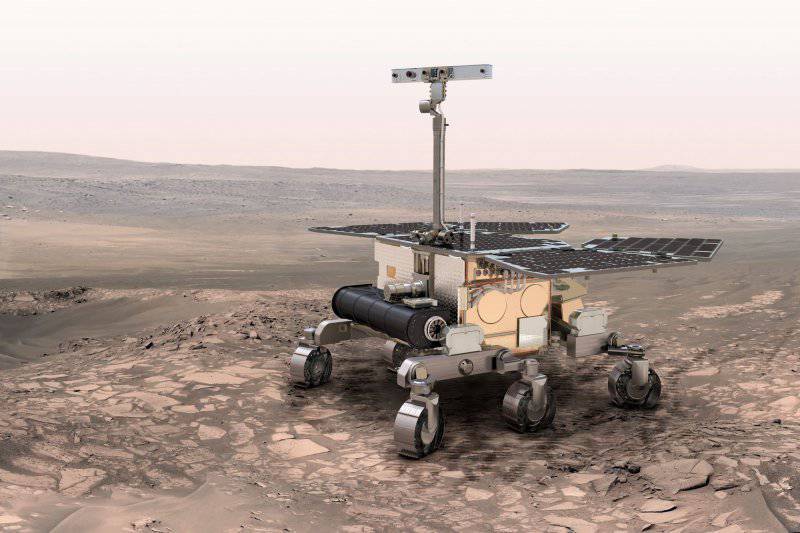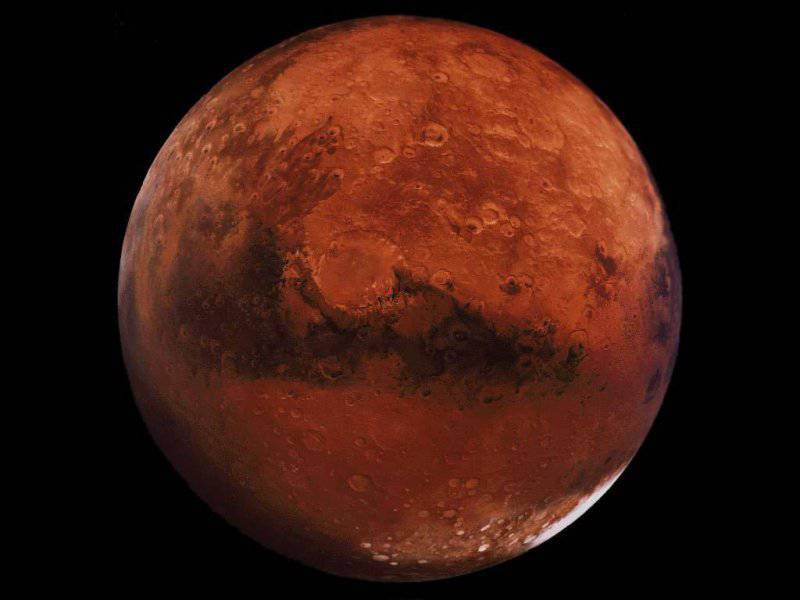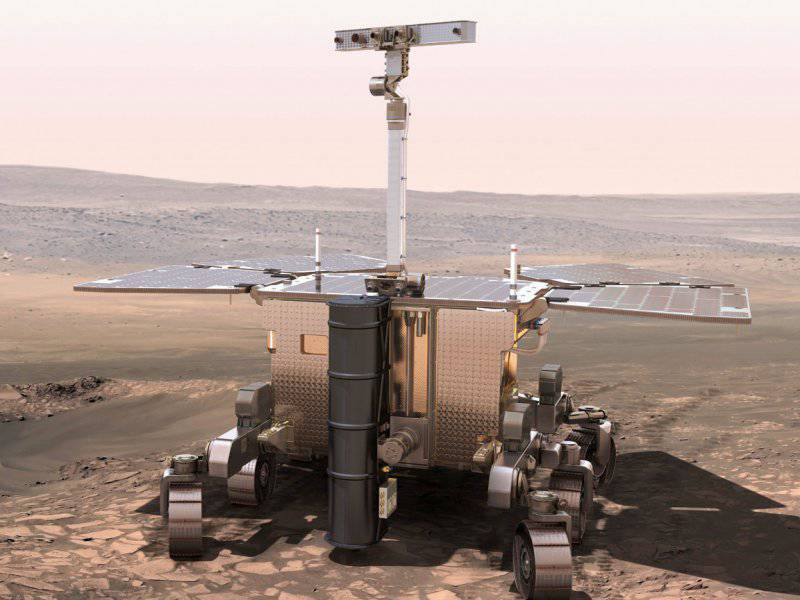For the landing of the Russian-European rover picked up four possible sites
It is reported that the rover will be equipped with a drill, which will help him pick up samples of Martian soil from a depth of 2 meters. Scientists hope that with the help of this device they will be able to detect the presence of traces of microbial activity on the fourth planet from the Sun. As part of the joint Russian-European project for the exploration of Mars, it is planned to carry out previously scheduled scientific research and to solve fundamentally new scientific problems. Important aspects of this project are the development, in cooperation with ESA, of a ground-based complex for receiving data and managing interplanetary missions, as well as achieving consolidation of the experience of European and Russian specialists in creating technologies for implementing interplanetary missions. At the same time, the parties are entitled to rely on the ExoMars project as an important stage on the way to the preparation of the exploration of the Red Planet.
Back in 2012, Roscosmos became the main partner of the European Space Agency in the implementation of the ExoMars mission. One of the conditions for this cooperation was the full technical participation of the Russian side in the second stage of this mission. According to the agreements reached between Roskosmos and ESA, the Russian Federation will provide not only the means of launching space for both missions, but also some scientific instruments for them, and will also create a landing module for the second mission, ExoMars-2018. The creation of the Martian landing module will be carried out by engineers of the Scientific Research and Production Association named after S. A. Lavochkin. At the same time, the Space Research Institute of the Russian Academy of Sciences (IKI RAS) has become the lead executor for the scientific component of this project from Russia.
The first stage of the joint project called “ExoMars-2016” includes the orbital module created by the ESA, as well as the demonstration landing module. The TGO (Trace Gas Orbiter) orbital spacecraft is designed to work on the study of small atmospheric gas impurities and the distribution of water ice in the soil of the Red Planet. For this device in Russia, the IKI RAS creates an 2 scientific instrument: the FREND neutron spectrometer and the ACS spectrometry complex.
As part of the second phase of the project, the ExoMars-2018 mission, the landing platform (Russian development) and the ESA rover, which weighs approximately 300 kilograms, will be delivered to the Martian surface using the landing module created by Russian experts from the SA Lavochkin NPO.
As a result, Russia will provide for this project:
1. Two Proton-M launch vehicles.
2. A system for entering the atmosphere of the red planet, reducing and landing the rover to the surface in 2018. In order to minimize possible risks, Russia will develop and construct the “iron” part (that is, mechanical structures), and the electronic filling of the landing platform will be supplied mainly from Europe.
3. The orbital spacecraft under the name TGO will receive Russian scientific instruments, including those created for the failed Russian mission Phobos-Grunt.
4. All scientific results of the joint expedition to Mars will become the intellectual property of Roskosmos and ESA.
To a potential landing site on the surface of Mars, a number of requirements were originally put forward. For example, it was supposed to be the area of the Red Planet with a set of different geological characteristics, including the presence of ancient rocks, whose age exceeds 3,4 billion years. In addition, scientists are only interested in areas in which earlier satellites confirmed the presence of large reserves of water in the past. At the same time, much attention is paid to the safety of the landing process, since the future of the entire program may depend on this stage of the mission.
It is also necessary to take into account the fact that the Martian atmosphere is not constant, and it will not be possible to lower the vehicle to a certain point. The landing platform will enter the Martian atmosphere at speeds in 20 thousands of km / h. The heat shield will have to brake the module to a speed that is 2 times the speed of sound. After that, 2 brake parachutes will slow down the descent module to subsonic speed. At the final stage of the flight, the speed and distance to the Martian surface will be controlled by electronics, so that, at the right moment, the rocket engines will be switched off and the descent vehicle will be switched to the controlled landing mode. At the same time, it is reported that the Sky Crane system, which was used to arrive on Mars to the famous Curiosity, will not be used for landing.
The conditions changing at each stage of descent lead to the fact that the zone of possible landing should represent an ellipse of 104 size by 19 km. Such a circumstance almost immediately excludes from the list a number of potentially interesting locations for scientists, for example, the Gale crater, in which the NASA rover is currently working. Since November 2013, leading scientists in the field of geography and geology of the Red Planet have been offering their own options for potential landing areas.
Of these areas, only 8 was left, which previously met the strict requirements of scientists. At the same time, after a thorough analysis of these sites, 4 of them were eliminated. As a result, the Gipanis valley (Hypanis Vallis), the Mors valley (Mawrth Vallis), the Oxia plateau (Oxia Planum), and the Aram ridge (Aram Dorsum) were included in the final list of landing sites for the rover. All four locations are in the equatorial region of Mars.
In a press release, Jorge Vago of the ExoMars project participant states that the modern Martian surface is hostile to living organisms, but primitive life forms could exist on Mars when the climate there was more humid and warm - between 3,5 and 4 billions years ago. Therefore, a place for landing the rover must be located in an area with ancient rocks, where once in abundance it was possible to find water in a liquid state. Four scientists-defined landing sites are best suited for mission purposes.
Thus, in the territory of the Morse Valley and the nearby Oxia Plateau, some of the oldest rocks, 3,8 a billion years old, come to the surface of Mars, and the high clay content in this place indicates the presence of water here in the past. Morse Valley at the same time lies on the border of lowlands and highlands. It is assumed that in the distant past large water flows ran down this valley to lower parts. In addition, the results of the analysis showed that the rock in these areas of the Red Planet has been eroded by oxidation and radiation for only the last few hundred million years. Until that time, the materials had been protected for a long time from the effects of a destructive environment and had to keep their bowels in good condition.
In the valley of Gipanis once, perhaps, there was a delta of a large Martian river. In this area, layers of fine-grained sedimentary rocks cover the materials that have been stored here for 3,45 billion years. And the fourth place, the Aram range, got its name from the winding canal of the same name, along the banks of this channel sedimentary rocks could reliably hide the evidence of past Martian life. The final decision on choosing the landing site of the rover will be made only in 2017 year.
Information sources:
http://www.vesti.ru/doc.html?id=2015292
http://press.cosmos.ru/rossiya-uchastvuet-v-proekte-issledovaniya-marsa
http://www.golos-ameriki.ru/content/mars/1622622.html



Information